May 21, 2025
Author:Jackson Watson
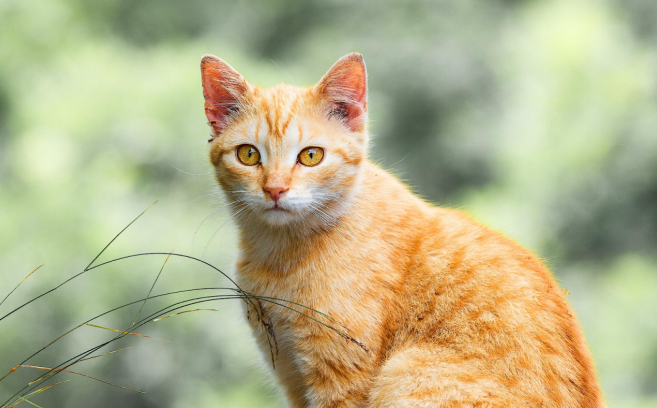
Have you ever noticed how some cats look as if they carry a slice of sunset in their fur? That bright glow belongs to the orange tabby cat. Although many people call it a “ginger breed,” the term only describes a coat pattern. Yet these cats feel special for good reasons. Their striking color, bold stripes, and famous “M” on the forehead make them easy to spot. Their warm nature makes them hard to forget.
This guide takes you on a detailed tour: we will trace their journey from ancient temples to modern sofas. Along the way, you will see how legends, cartoons, and real-life heroes turned the orange tabby cat into a cultural icon. By the final page, you will know exactly why so many families choose this radiant companion.
In cat terms, “tabby” refers to a pattern, not a family line. Five standard designs paint the picture:
● Mackerel—narrow stripes that run like fishbones along the body.
● Classic—bold swirls that form marble-cake shapes along the sides.
● Spotted—broken mackerel stripes that create neat dots.
● Ticked—each hair has bands of light and dark, giving a sandy look.
● Patched—tabby markings mix with large blocks of another color.
The orange tone comes from pheomelanin pigment. Because of the agouti gene, every red-haired cat shows at least faint markings—people call these “ghost stripes.” Even cats that look solid reveal stripes under bright light or when the fur shortens after a trim. The famed “M” on the forehead adds charm. Stories credit a saint who stroked a kitten beside baby Jesus; others point to the Prophet Mohammed who lifted his robe so a sleeping cat could remain comfortable. Either way, the mark sticks—and so does the affection people feel whenever they meet an orange tabby cat.
Want to see how other coat colors grab attention? Compare gingers with sleek midnight-hued companions and notice how patterns influence first impressions.
Painted walls inside Egyptian tombs show striped hunters perched next to royalty. Traders prized those mousers for protecting grain stores along the Nile. The early tabby look mirrored wildcats from Africa, Europe, and Asia that prowled grasslands with similar camouflage.
Fast-forward to the Ottoman Empire. Around the thirteenth century, merchants kept cats in busy silk markets. A simple gene flip turned narrow stripes into wide swirls—that blotched pattern persisted. By the 1700s, street scenes in London and Amsterdam featured every tabby form. When coat colors expanded, a bright recessive shade—our orange—appeared and quickly spread because it stood out and helped owners tell cats apart. Sailors even believed a ginger mouser brought luck at sea, so they welcomed the orange tabby cat onto trading ships.
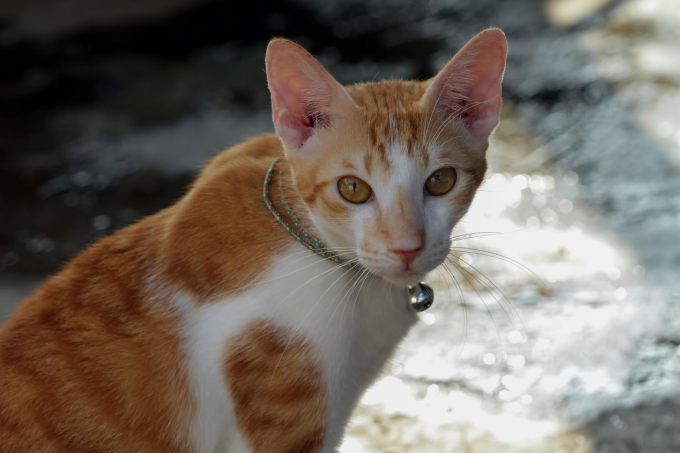
The word itself traces to Baghdad’s al-Attabi district, famous for wavy silk called “attābī.” European dealers shortened the cloth name to “tabby,” then used it for any striped surface—including feline fur. Language shifted, yet the image stuck.
If historic links intrigue you, explore Egypt-linked breeds for more evidence of cats shaping human culture.
The orange trait sits on the X chromosome. Males carry one X and one Y, so a single O allele turns their coat red. Females possess two X chromosomes; they need two O alleles for the same full-body color. Because that double match occurs less often, males outnumber females among orange tabbies by roughly four to one.
A separate tabby locus controls stripe layout. The mackerel allele (Tm) usually dominates, producing narrow bars. The classic version (Tb) results in swirls when the dominant allele is absent. Extra modifier genes can break stripes into spots or create the ticked sand-dune look. Without the agouti “on/off” action, pigment fills every hair and hides stripes—but as mentioned, red pigment always leaks pattern clues.
When one X in a female carries the O gene and the other does not, her body selects which chromosome to silence in each skin cell. That random process leads to tortoiseshell or calico patches—study the full story in this color mosaic explanation. Male calicos exist only when they carry XXY chromosomes; most cannot sire kittens.
You may also see dark freckles on the lips, gums, or eyelids of your orange tabby cat. These “lentigo spots” enlarge with age but rarely spell trouble. Note any sudden changes and share photos with your vet.
Understanding such genetics helps owners explain why two plain-colored parents can surprise everyone with a flame-furred kitten. It also debunks myths that coat color controls smarts or mood. Genes set the palette; nurture paints the personality.
An orange tabby cat can shine like copper or soften into peach. Some wear snowy mittens or a white blaze on the nose. Others appear half-and-half, orange on top and white underneath. Spotting these traits aids quick identity checks, which proves useful when multiple cats share a home.
Because many breeds display this color—think Maine Coon, Persian, British Shorthair, or simple Domestic Shorthair—body shapes differ. A male Maine Coon can reach nine kilograms, while a female Abyssinian may hover near three. Growth charts like the standard weight-by-age guide help track healthy progress.
Males often grow larger than females due to hormones that boost muscle. Their size can mislead caretakers into giving extra treats. Keep meals on target with an automatic feeder that controls portions.
The strong “M,” eyeliner stripes, and tail rings act like a fingerprint. Eye shades include gold, hazel, bright green, or a rich copper that matches the coat. A tiny group shows rare blue-green eyes—usually in cats that also carry a dilute gene.
Many gingers love climbing. Install sturdy perches; the best wall shelves give bigger boys room to sprawl without wobble.
Ask ten owners and you will hear words like “friendly,” “fearless,” and “talkative.” A typical orange tabby cat greets you at the door, then marches off to inspect groceries. These cats enjoy social circles, so they thrive in homes where someone chats back.
Memes suggest orange cats act clumsy or forget rules. In truth, kitten handling, training, and environment shape behavior more than coat genes. Provide clear routines. A timed feeder signals meal hours, which reduces begging. A quiet fountain encourages steady drinking and keeps them near the kitchen rather than the sink.
Rotate puzzle feeders, hide dry kibbles around the home, and switch toys weekly. High-value items such as interactive feather spinners satisfy hunting drives. Aim for two fifteen-minute workouts every day. After play, most gingers curl beside their favorite human, ready for lap time and soft murmurs.
Short-haired gingers often shed heavily. Regular brushing lifts loose fur, lowers hairball risk, and saves you from lint rollers. If fur still coats your clothes, try these tips to clear fabric quickly. Long-haired lines, such as Maine Coons, need combing three times a week to stop tangles.
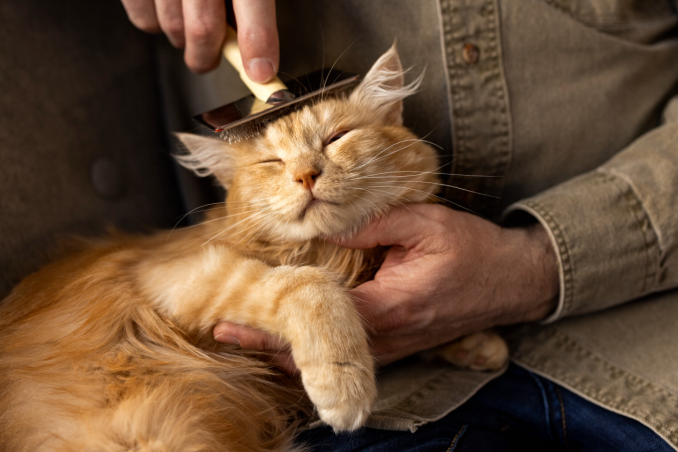
Use climbing towers, window hammocks, and food puzzles. When you plan road trips, pack a secure carrier, water, and a small litter tray; follow this car travel checklist to cut anxiety. At home, automatic toys can entertain while you work, but supervised playtime remains vital.
Obesity tops the risk list. Measure portions with guides on how much food to give. If weight creeps up, adjust calories and follow steps to support safe slimming.
Older cats may drink less. A fountain care guide shows how moving water boosts intake and protects kidneys. Check freckles during grooming sessions; most stay harmless, but note size or color shifts. Finally, maintain yearly vet visits; refer to simple wellness actions for a full checklist.
Garfield first appeared in newspapers in 1978 and taught readers that lasagna plus naps equals happiness. Morris charmed television ads for pet food in the 1970s. Film lovers recall Orangey, who won two animal Oscars for roles in “Breakfast at Tiffany’s” and “The Diary of Anne Frank.”
Real life offers Mayor Stubbs, a shop cat who “governed” Talkeetna, Alaska, for twenty years. Winston Churchill demanded that a ginger named Jock live at Chartwell forever; the estate still honors that wish.
Artists use bright orange coats to signal warmth and friendliness. Children’s books present ginger heroes who help shy kids gain courage. Folk sailors painted orange tabby cat figures on bows for luck, believing the color of dawn would guide them home. Today, social media pushes the “himbo cat” meme—playful but lovable—keeping the cultural flame alive.
Tabbies fill shelters because the pattern is common in mixed-breed litters. Staff can point out kittens or adults that match your energy level. You may also meet pedigree options—Abyssinian, British Shorthair, or Maine Coon—sporting that iconic coat.
Before signing papers, set up your home. Install scratching posts, hiding spots, and water stations. Use a smart feeder if you keep long work hours. Expect fifteen to twenty years of daily care and yearly vet bills. When you plan vacations, arrange a sitter or learn how to feed a cat while away. If you feel ready, an orange tabby cat will reward that commitment with lasting warmth and endless entertainment.
From desert murals to internet memes, the orange tabby cat stands out with lively color and larger-than-life spirit. Genetics create the hue, but your care shapes the bond. Brush often, measure meals, schedule play, and provide fresh water. Give them space to climb and sunny spots to nap. Most of all, share your time. In return, a ginger companion will greet you with chirps, purr at your side, and brighten every room. If you plan to adopt, visit a local shelter—your future orange tabby cat may already wait there, eager to start a new chapter with you.
Label:
Popular Post
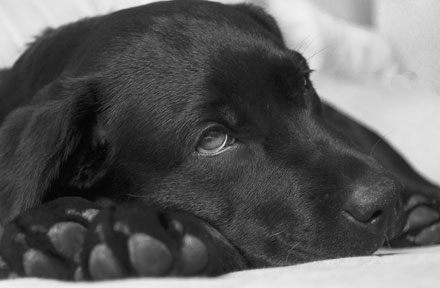
What to Feed a Sick Dog With No Appetite? [2025 Guide]
May 16, 2023

Troubleshooting Common Issues with Automatic Pet Feeders: Tips & Tricks for Pet Owners
Oct 26, 2023
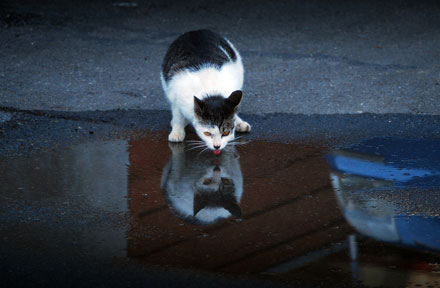
Why Does My Cat Cough After Drinking Water? 8 Potential Reasons
Mar 13, 2023
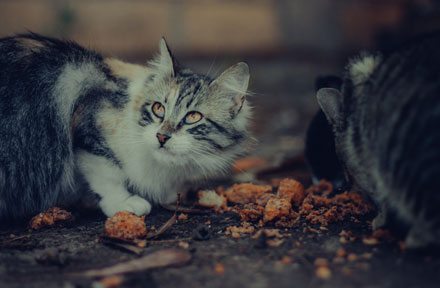
My Cat Only Eats A Little at A Time - What to Do?
Feb 27, 2023
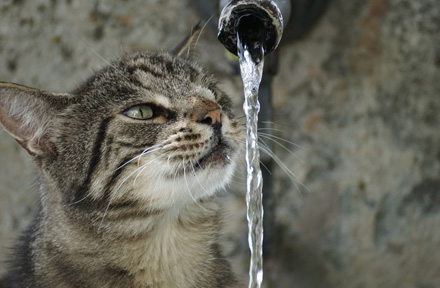
Why is My Cat Throwing up Water? Top 5 Causes Here
Feb 08, 2023
$99.99
$129.99
Copyright © 2025 WOPET. All Rights Reserved.